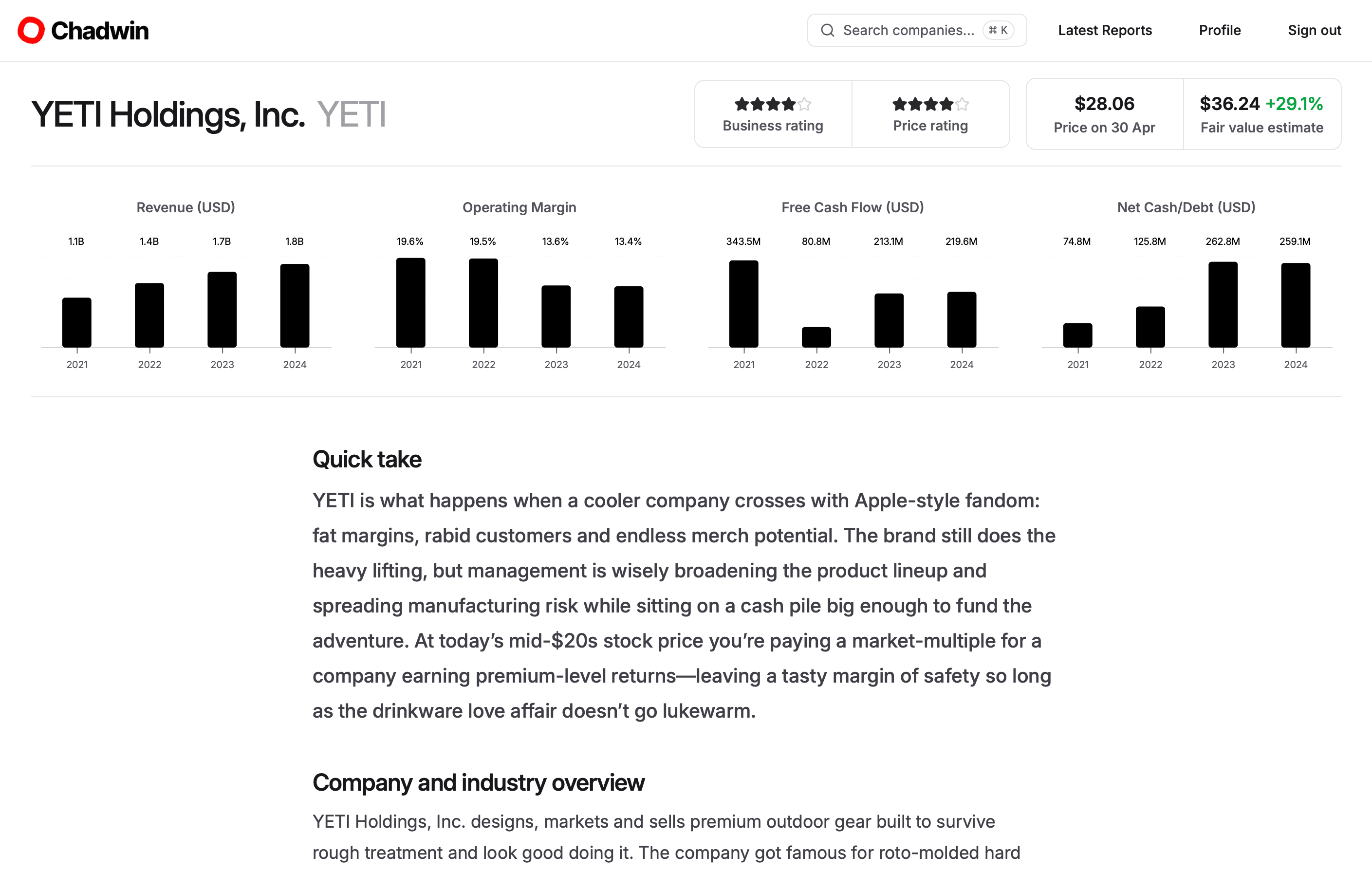The research engine for long-term compounders.
We use frontier AI models to find, research, and value companies with the best prospects for long-term value creation.


Latest investment memos
Synopsys, Inc. (SNPS)
12 Oct 2025
The Toro Company (TTC)
12 Oct 2025
Zoetis Inc. (ZTS)
30 Sept 2025
EverQuote, Inc. (EVER)
28 Sept 2025
Lantheus Holdings, Inc. (LNTH)
28 Sept 2025
Crocs, Inc. (CROX)
28 Sept 2025
The Descartes Systems Group Inc. (DSGX)
28 Sept 2025
Paylocity Holding Corporation (PCTY)
28 Sept 2025
Badger Meter, Inc. (BMI)
28 Sept 2025
BellRing Brands, Inc. (BRBR)
23 Sept 2025
Get an overview and then dive deep.
We give you the big picture, then let you dive deep into the details. Our AI research engine is trained to find companies with great products, great management, and the ability to maintain that greatness for years to come. We let you know if the share price is fair so you can build a portfolio destined for growth.


Understand
the fine print.
We research everything from financial results and annual reports to information on lawsuits and corporate misbehavior. We digest all of this information into easy-to-read reports, highlighting the facts that matter most to an investor.
See all financial
data at a glance.
In addition to our comprehensive research reports, we also give you access to 10 years of income statements, balance sheets, and cash flow statements. Put together, this gives you a complete picture of the company, both qualitatively and quantitatively.

Pricing
Standard
- Access to all company reports
- 10 years of financial statements
- Stock price targets
- Business model analysis
- Industry & competitor analysis
- Competitive moat analysis
- Investment thesis
